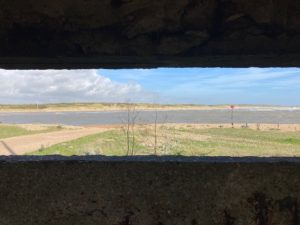Shifting Sands: Mark Hooper goes in search of firm foundations at the site of a lost East Sussex town.
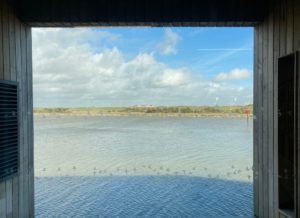
‘On the eighth day of Epiphany, during the day and the night that followed, a ranging east wind and an angry south-westerly brought devastation. Violent, roaring winds drove the sea back from the shore and ripped the rooves from houses or destroyed them completely. The tallest oaks were torn from their roots or lost their branches, lead was stripped from churches and the largest and sturdiest ships sank in the deep… At the port of Winchelsea, so important to England and most of all to London, the sea, as though insulted and enraged by being driven back the previous day, breached the bounds of the shore, flooded houses and carried away many drowned men.’
The above eyewitness report was written by the monk and medieval chronicler Matthew Paris in 1252. As he notes, Winchelsea used to be one of the most significant ports in the country in the 13th century, vital not only for defence (especially as there was no permanent national navy at the time) but also as a major hub for importing wine and cloth.
It was a sizeable town for the age — with an estimated 700+ houses, 50 inns and two churches, and a population of between 4-6,000 people. But, crucially, it was built on a shingle spit of landed that jutted out into the sea between Camber and Rye, and a series of massive storms such as the one detailed by Paris eventually undermined its flimsy foundations, literally drowning it under the waves. The worst of these, the Great Storm of 1287, was the one that finally did for Winchelsea.
Not that this is the story of a devastating force of nature catching everyone unawares. As is obvious from the eyewitness reports above, Winchlesea had long been at the mercy of the waves: 35 years separate the storm reported by Paris and the Great Storm that ultimately washed it away. The locals had known for over half a century that their hometown was doomed, and had petitioned long and hard for something to be done to save it. Eventually, it was Edward Longshanks, a man not known for his mercy, who proved their savior. In 1276, he visited Winchelsea and decided that a new, modern, fit-for-purpose town should be built on the higher ground of nearby Iham Hill.
The story of how New Winchelsea emerged from the ruins of its namesake is told far better by Dr Matthew Green in Shadowlands (a book I’ve mentioned and raved about before in this column). But it makes a nice prelude to a brilliant walk — one that, as you might expect, takes in crashing waves along a windswept shingle beach, but also offers moments where you can breathe in the sublime calm of nature, too.
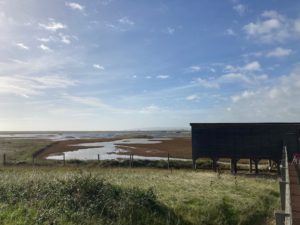
The trail begins at Rye Harbour Nature Reserve, with its shiny new ‘Discovery Centre’, completed during lockdown. It’s fantastically well done — airy and spacious, with huge panoramic windows from which you can admire the straight line of the River Rother as it heads out to — a view you might recognise from the Eric Ravilious painting of it (prints available to buy in the shop, alongside other, note-perfect offerings from CBTR favourites including Matt Sewell and Angie Lewin). The exterior is an exercise in quiet Natural Modernism — all faded wood paneling and poured concrete floors, designed to show off the landscape rather than dominate it.
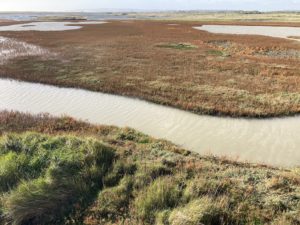
The man-made structures continue along the circular walk — deserted fishermen’s huts, leaking pillboxes, birdwatching hides, and an abandoned lifeboat house with another tragic story behind it. This building once held the Mary Stanford lifeboat — an old-fashioned ‘oar pulling and sailing’ type, crewed by local volunteers, that went out on its last rescue mission in the early morning of 15 November 1928. In a heavy storm, a small steamer, the Alice from Riga, collided with the larger German vessel, the Smyrna. It took three attempts to launch the Mary Stanford — by which time Rye coastguard received a message to say that the Alice’s crew had been rescued by the Smyrna. A flare was sent up to recall the lifeboat, but in the extreme weather, it wasn’t spotted by those aboard the Mary Stanford. Later that morning, a boy collecting driftwood on Camber Sands told his parents he’d seen it capsize. Despite the efforts of 100 locals to reach them, all 17 crew were drowned.
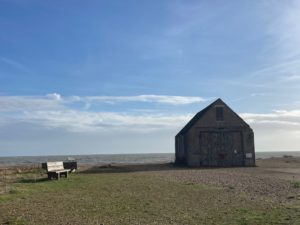
There’s no doubting that it’s an eerie, barren, savage place, relentlessly pummeled by waves that have claimed the lives of countless souls over the centuries. (Other stories are told along the route — including a surprising and arresting series of graphic novel shorts by Julian Hanshaw detailing bomber pilots lost at sea and missing ambulance crews during WWII.) But, a few hundred metres inland, the mood is entirely different. Here, wetlands and saltmarsh habitats play host to over 4,000 species of plants and animals — 300 of which are rare or endangered.
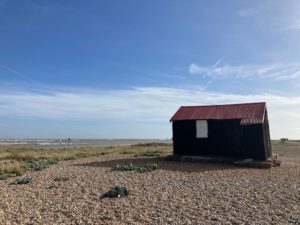
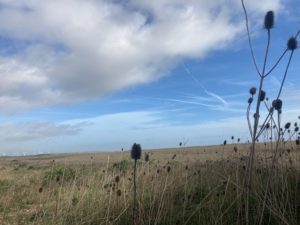
The area is marked by shingle ridges, evidence of those colossal storms over the years (as is the course of the Rother, which was diverted closer to Rye by them). But despite the forces that created them, the wetlands have a hypnotic, meditative beauty to them. From the silence of the hides, you can sit for hours, letting your eyes grow accustomed to the light, seeing the landscape spring to life as it teems with birdlife — curlews, terns, oystercatchers, egrets (I’ve seen a few)…not to mention the odd, brilliantly-named Bar-tailed godwit.
It’s a place that has made a mockery of human hubris and tested individual bravery, pushing an entire town back from the coastline. But for all nature’s power, there is a beauty that keeps us coming back here: both wild and becalming. And they do a decent soup of the day too.
